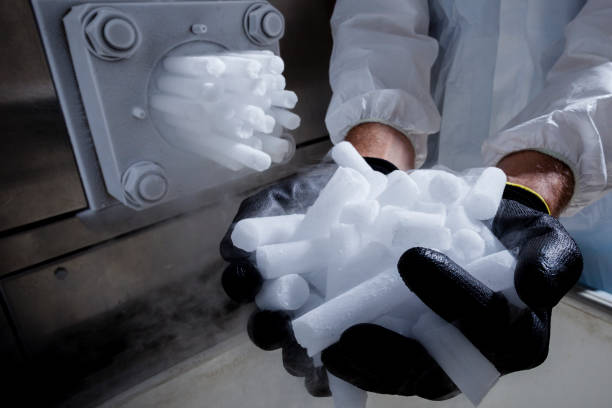Dry Ice Use for Preserving Meat: A Comprehensive Guide

Introduction
When it comes to preserving meat, keeping it fresh and maintaining its quality is crucial. One of the best ways to achieve this is by using dry ice. Dry ice is a solid form of carbon dioxide, which is much colder than regular ice and doesn’t melt. In this article, we will discuss how to use dry ice for preserving meat.
Why Use Dry Ice for Preserving Meat?

Using dry ice for preserving meat has several advantages. Firstly, it is much colder than regular ice, which means it can maintain a temperature of -109.3°F, keeping the meat fresh for a longer time. Secondly, it doesn’t melt like regular ice, which means there is no risk of the meat getting wet, leading to freezer burn. Lastly, it is a more cost-effective solution for preserving meat as it requires less space and can be stored for a more extended period.
How to Use Dry Ice for Preserving Meat?
Using dry ice for preserving meat requires some basic steps:
Step 1: Wrap the Meat
Before putting the meat in a container with dry ice, it needs to be wrapped tightly in a plastic wrap. This prevents moisture loss and freezer burn.
Step 2: Insulated Container
Place the wrapped meat in an insulated container such as a cooler or a

Styrofoam box. This helps to maintain the temperature and prevents air from entering the container.
Step 3: Add Dry Ice
Place a layer of dry ice on the bottom of the container. The amount of dry ice needed depends on the size of the container and the quantity of meat being preserved. As a general rule, use 10 to 20 pounds of dry ice for every 24 hours of preservation time.
Step 4: Add Cardboard or Styrofoam
Place a piece of cardboard or Styrofoam on top of the dry ice to prevent direct contact with the meat.
Step 5: Add Meat
Put the wrapped meat on top of the cardboard or Styrofoam and then put another layer of cardboard or Styrofoam on top of the meat.
Step 6: Close the Lid
Close the lid tightly to keep the dry ice and the cold air inside the container.
Safety Precautions
It is essential to handle dry ice with care as it is extremely cold and can cause frostbite or skin damage. Always use gloves or tongs to handle dry ice, and never touch it with bare hands. Also, make sure to use dry ice in a well-ventilated area as it can release carbon dioxide gas, which can be hazardous in enclosed spaces.
Conclusion
Using dry ice for preserving meat is an effective and cost-efficient way to keep the meat fresh for a longer time. With the above steps and safety precautions, you can easily use dry ice for preserving meat at home. So, the next time you need to preserve meat, consider using dry ice for the best results.

Key Takeaways
- Dry ice is much colder than regular ice and doesn’t melt, making it an ideal solution for preserving meat.
- Wrapping the meat tightly in plastic wrap, placing it in an insulated container, and adding dry ice are the basic steps for using dry ice to preserve meat.
- Always handle dry ice with gloves or tongs and use it in a well-ventilated area to avoid skin damage or exposure to carbon dioxide gas.
Where to Buy Dry Ice
If you’re interested in using dry ice to preserve your meat, you may be wondering where to buy it. Dry ice can be purchased from many grocery stores, such as Walmart and Safeway, as well as from industrial gas suppliers. Some online retailers also sell dry ice and can deliver it to your doorstep. When purchasing dry ice, it’s important to note that it must be kept in a well-insulated container during transport and storage. It’s also recommended to wear gloves when handling dry ice to avoid skin burns. Always follow safety precautions and handling instructions provided by the seller.


